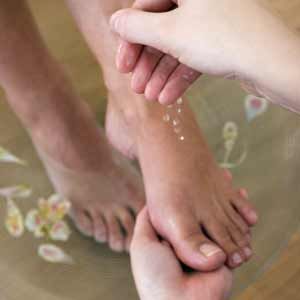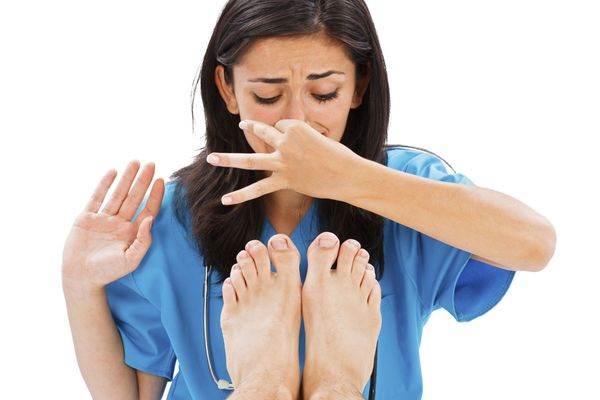We're hard on our feet, doing everything from stuffing them in stilettos to exposing them to the elements to running miles and miles on them. No wonder dry skin on the feet is a common complaint! Not only is dry skin on your feet unattractive and embarrassing, it can also be itchy, painful, and burning, too, especially in the case of conditions like athlete's foot.
What Causes Dry Skin?
There are a number of reasons for dry skin on the feet and toes. Just like anywhere else on the body, xerosis (dry skin) occurs when an environmental factor, like lack of humidity, medications, or harsh ingredients in your soap, strips away the fatty coating that protects skin from the elements. Red, itchy patches can pop up as telltale symptoms of dry skin.
Advertisement
But if moisturizing doesn't help the problem, you may be suffering from a bigger issue. Medical conditions such as diabetes, psoriasis, thyroid disease, eczema and athlete's foot can also cause dry, cracked skin on your feet, among other symptoms.
The majority of the time patients think their problem is dry skin, it's actually athlete's foot, says Sima Soltani, DPM, in Irvine, Calif., in an article on NailsMag.com. There are three different types of it, and it can look like a red, scaly infection on the sole and side of the foot or blisters on the bottom of the foot, says Miguel Sanchez, MD, associate professor, NYU Department of Dermatology, Director of Dermatology, Bellevue Hospital Center.
Fungal and bacterial foot problems like athlete's foot occur because our feet spend most of the day stuffed into shoes—warm, dark, sweaty places are the perfect conditions for fungus to thrive. These conditions can cause dry skin on your feet, and possibly redness, blisters, itching, and peeling..
The most common form of athlete's foot is itchy skin in between toes called toe-web infection. The moccasin-type infection can be red and scaly and affects the plantar area of the sole and sides. The third type is a vesicular-type infection that causes blisters on the undersides of the foot. Which type of athlete's foot you get depends on how you got the infection and how the fungus is affecting you. Also, remember that when your feet are wet, you're more susceptible to toenail fungus, which left untreated can spread across toes [source: Dr. Sanchez].
Advertisement



